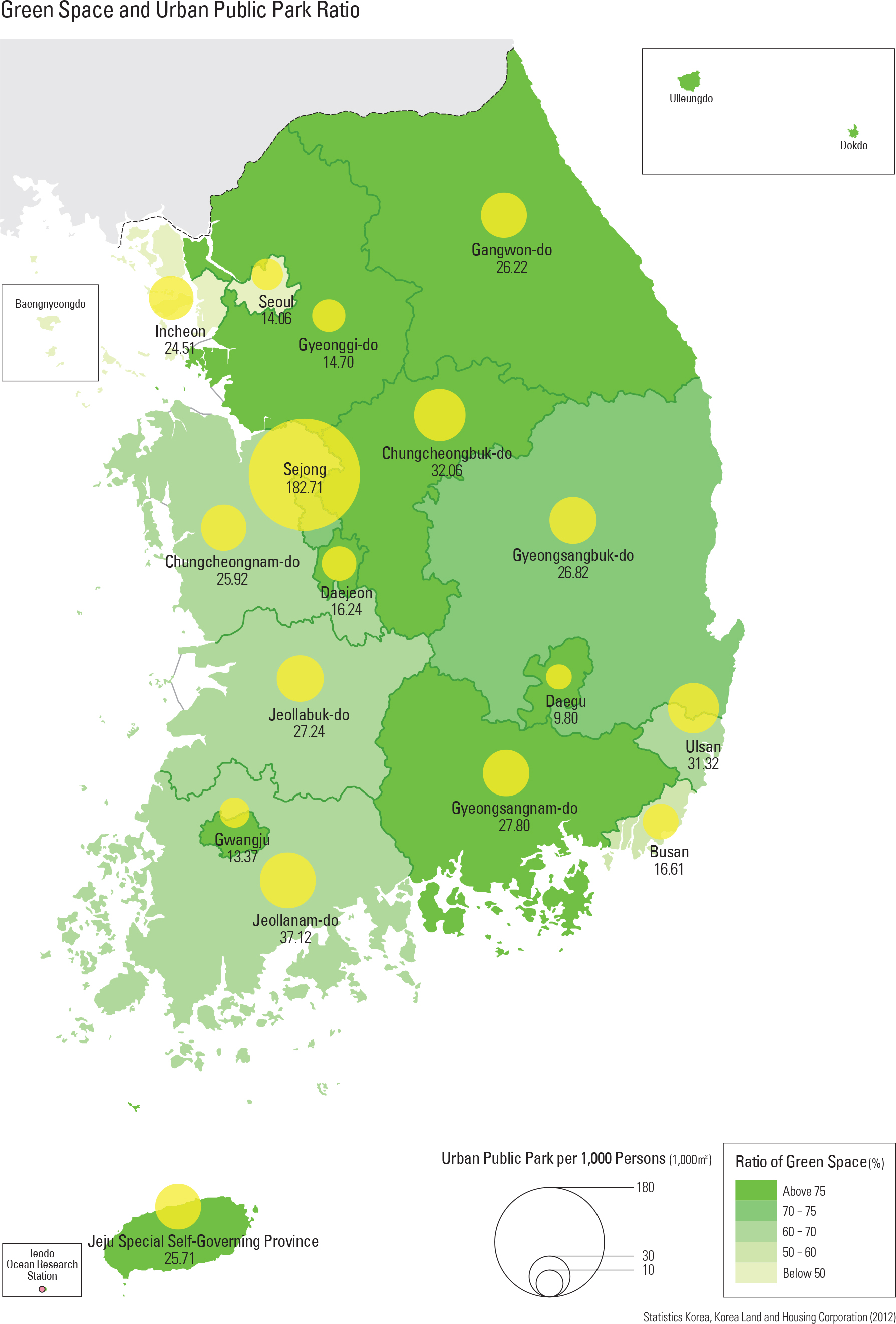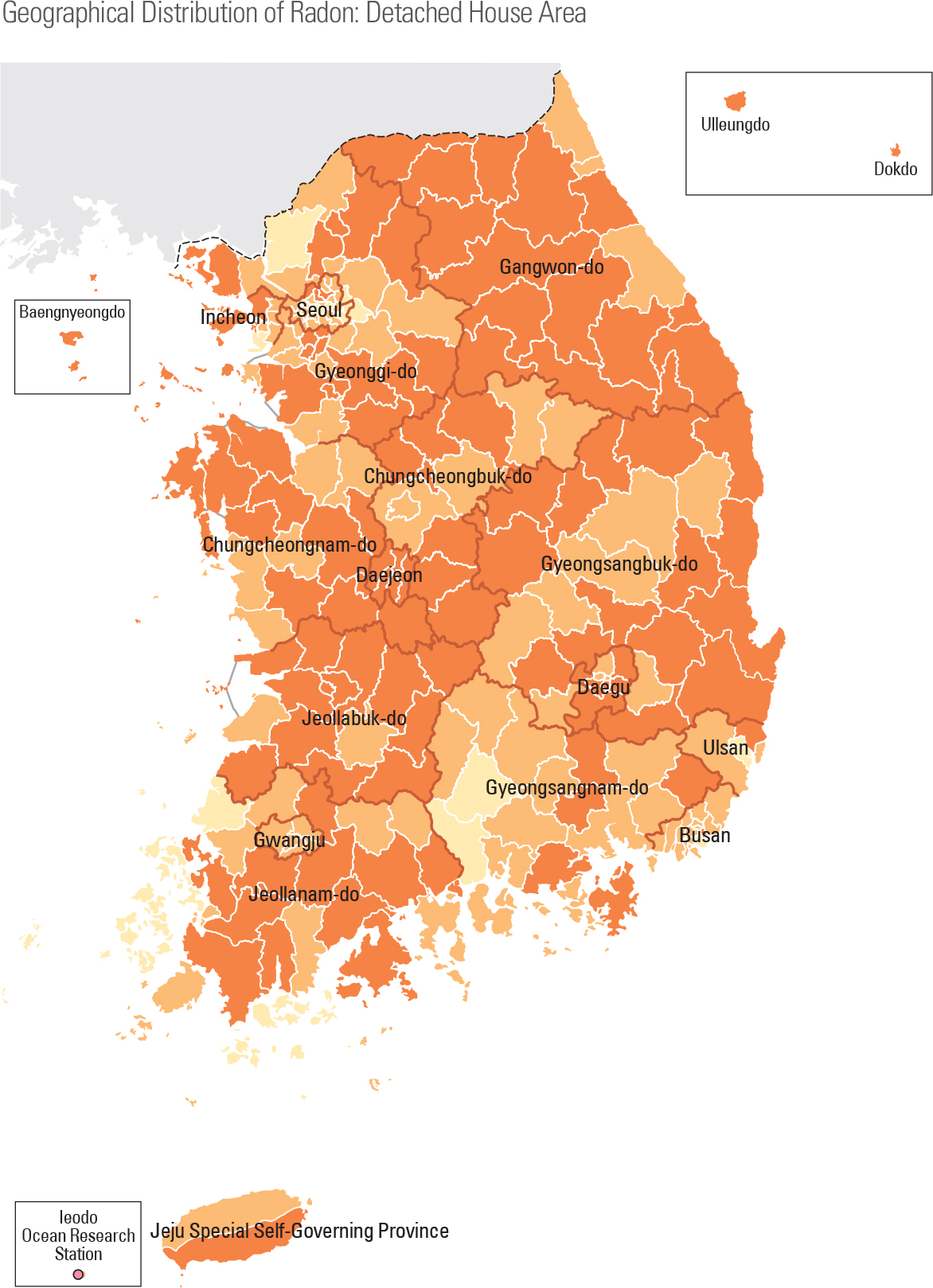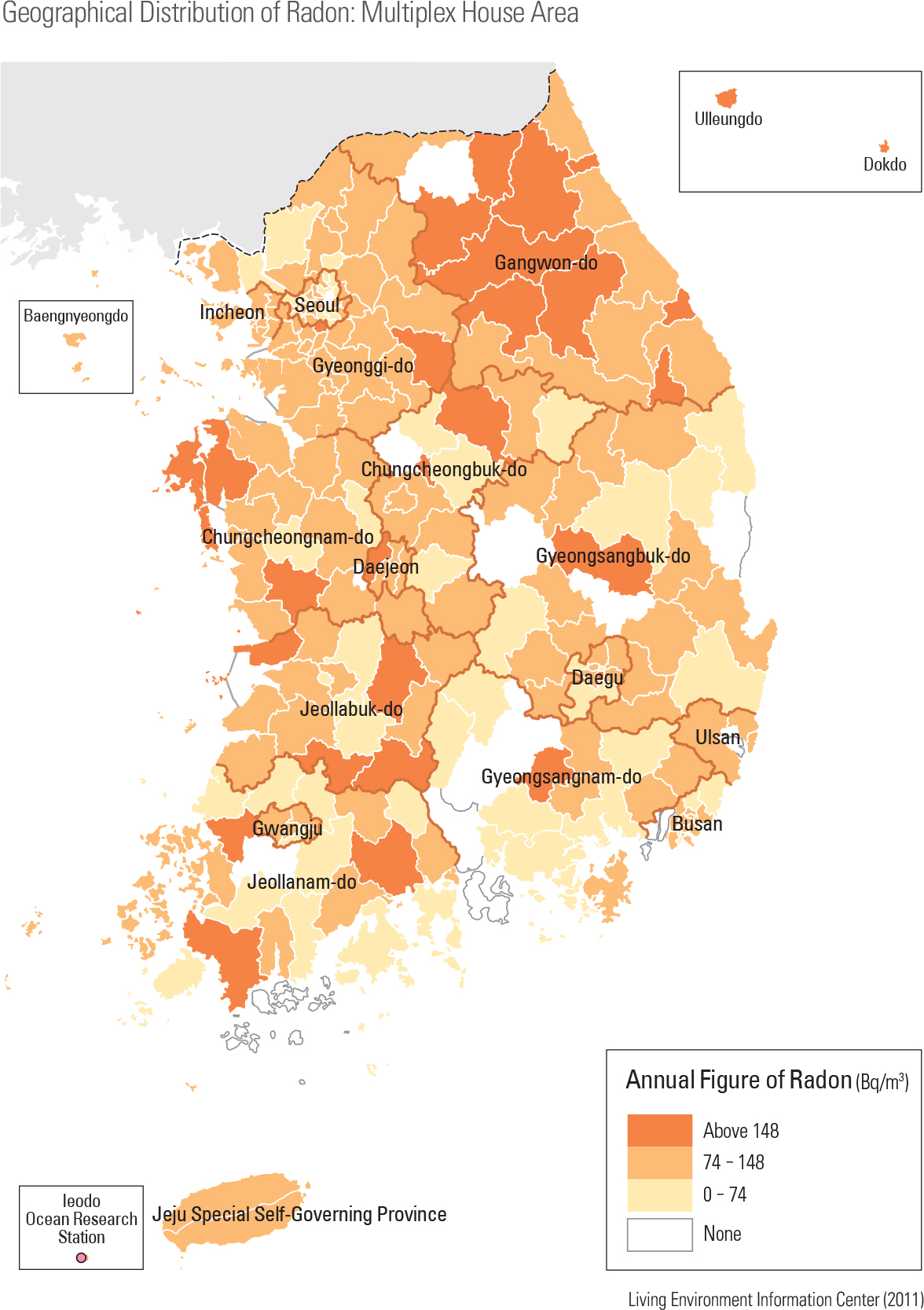English I
A higher quality of life typically is associated with such amenities as green spaces and public parks, conveniences such as water and sewage provision, and necessities such as the reduced risk of noise and radioactivity, as well as general risk management. The Sejong Multifunctional Administrative City contains an overwhelmingly high percentage of public parks. Large local governments’ green tract ratios show that Gangwon-do, Gyeonggi-do, Chungcheongbuk-do, and Gyeongsangnam-do, which are all located within mountainous areas, contain a larger share of green spaces, but there are significant variations in such ratios between si·gun·gu (city·county·district) within larger local governments. The broad provision of both clean water and waste management is also a high priority especially in light of the fact that Korea is the representative country of water shortage within the OECD. Noise pollution is a pronounced problem in large cities, particularly in those with heavy industry and airports in their vicinities. page_2 |





